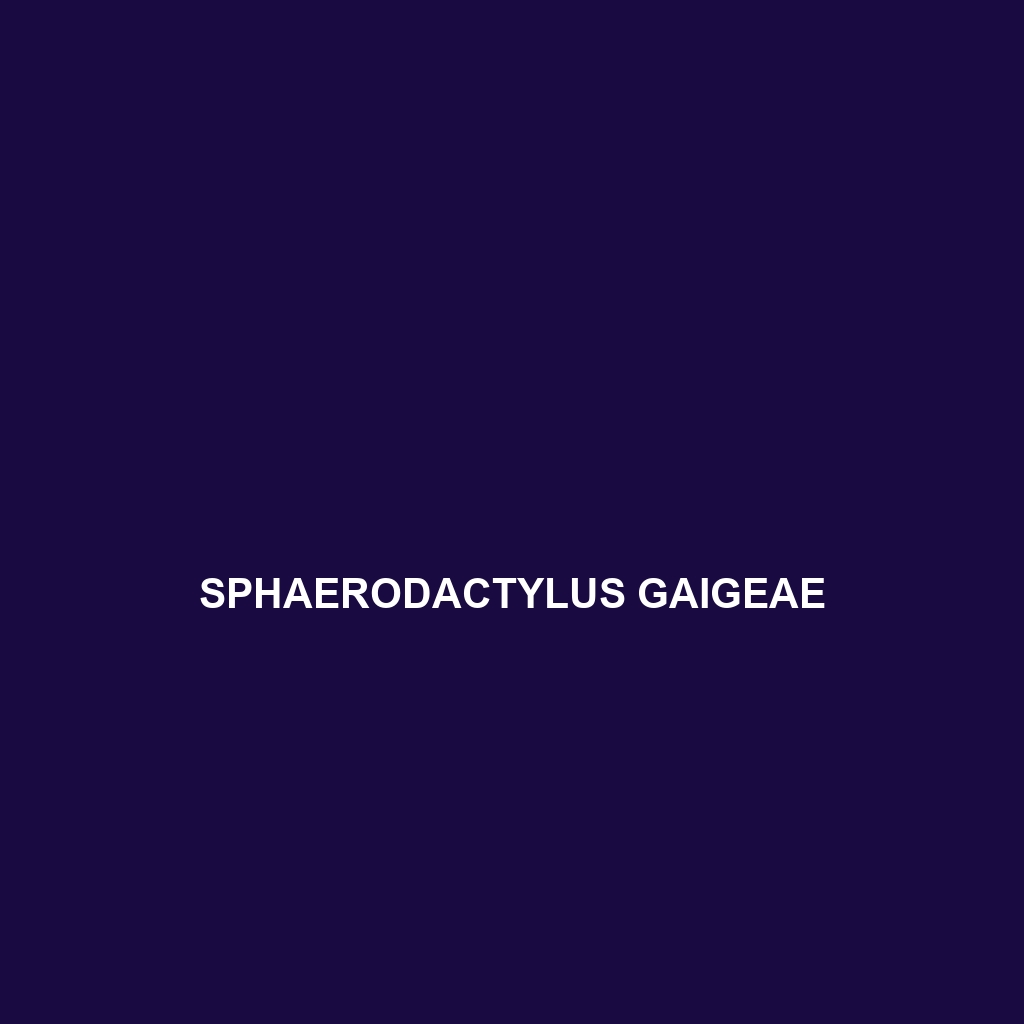Common Name
Sphaerodactylus gaigeae
Scientific Name
Sphaerodactylus gaigeae
Habitat
Sphaerodactylus gaigeae, commonly known as Gaige’s Sphaero, primarily inhabits subtropical rainforests and tropical areas, notably found in the Caribbean region, particularly on the islands of the Greater Antilles. This species thrives in humid environments with abundant leaf litter and large vegetation, often residing in the dense understory where humidity levels remain high. The preferred habitats also include mangrove ecosystems, where the interconnected root systems provide refuge from predators and suitable microclimatic conditions. Generally, the climate is warm and tropical, which further supports the diverse flora and fauna accompanying this lizard.
Physical Characteristics
Sphaerodactylus gaigeae exhibits distinctive physical characteristics that enable it to adapt to its habitat. Adult individuals typically measure between 2 to 4 inches in total length, featuring a slender, elongated body with short limbs. Their coloration ranges from light brown to a reddish hue with dark speckling, which serves as camouflage against the forest floor. One unique feature of this species is its smooth, glossy scales, which help reduce moisture loss and provide some protection against the sun. These lizards also possess large, bulging eyes that enhance their vision, especially in low-light conditions, contributing to their survival in the dense vegetation.
Behavior
Gaige’s Sphaero is predominantly a nocturnal species, demonstrating increased activity during twilight and nighttime when it hunts for food. During the day, these lizards often seek shelter under rocks, logs, or leaf litter to evade predators and maintain their body temperature. Social interactions among Sphaerodactylus gaigeae individuals can be observed during the mating season, where males exhibit territorial behaviors by displaying and producing vocalizations to attract females. Mating rituals typically involve intricate courtship displays, which showcase their agility and vibrant colors. They are solitary creatures outside of the breeding season, preferring to occupy their own defined territories.
Diet
Sphaerodactylus gaigeae is primarily insectivorous, with a diet consisting mainly of small invertebrates such as ants, beetles, and spiders. These lizards have evolved to be opportunistic feeders, often hunting at night to capture their prey. In addition to insects, they may consume smaller arthropods and have been observed feeding on various plant materials when insect availability is low. Their agile hunting skills and keen eyesight make them effective predators in the dense undergrowth, where they rely on quick movements to snatch prey.
Reproduction
The reproductive cycle of Sphaerodactylus gaigeae typically occurs in the warmer months, with mating season peaking in late spring to early summer. Females are known to lay between 2 to 3 eggs per clutch, which are deposited in leaf litter or moist soil to protect them from predators. The incubation period lasts approximately 6 to 8 weeks, after which the hatchlings emerge fully formed and ready to start their independent lives. Notably, parental care is minimal, with adults often leaving the eggs to fend for themselves. This strategy allows for higher reproductive rates, though it may also pose risks for the unprotected young.
Conservation Status
Currently, Sphaerodactylus gaigeae is classified as least concern according to the International Union for Conservation of Nature (IUCN). However, various threats, including habitat destruction due to deforestation, agricultural expansion, and urbanization, pose risks to their populations. Conservation efforts are ongoing, with a focus on habitat restoration and protection measures to preserve their natural environments. Increased awareness and ecological studies are essential for understanding the long-term viability of Sphaerodactylus gaigeae in the face of environmental changes.
Interesting Facts
One notable aspect of Sphaerodactylus gaigeae is its incredible adaptability to its humid environment, allowing it to thrive in various ecosystems within its range. Additionally, these lizards have unique adaptations, such as their specialized toe pads, which allow for adept climbing on smooth surfaces. Furthermore, their cryptic coloration not only aids in camouflage but also serves as a mechanism for avoiding predation from birds and other larger predators, contributing to their successful survival strategy.
Role in Ecosystem
Sphaerodactylus gaigeae plays a vital role in its ecosystem as both a predator and prey. As insectivores, they contribute to controlling insect populations, thereby maintaining ecological balance within their habitats. Furthermore, they serve as a food source for various predators, including birds and snakes, which rely on these small lizards to sustain their diets. This intricate web of interactions highlights the importance of Sphaerodactylus gaigeae in promoting biodiversity and stability in forest ecosystems.
